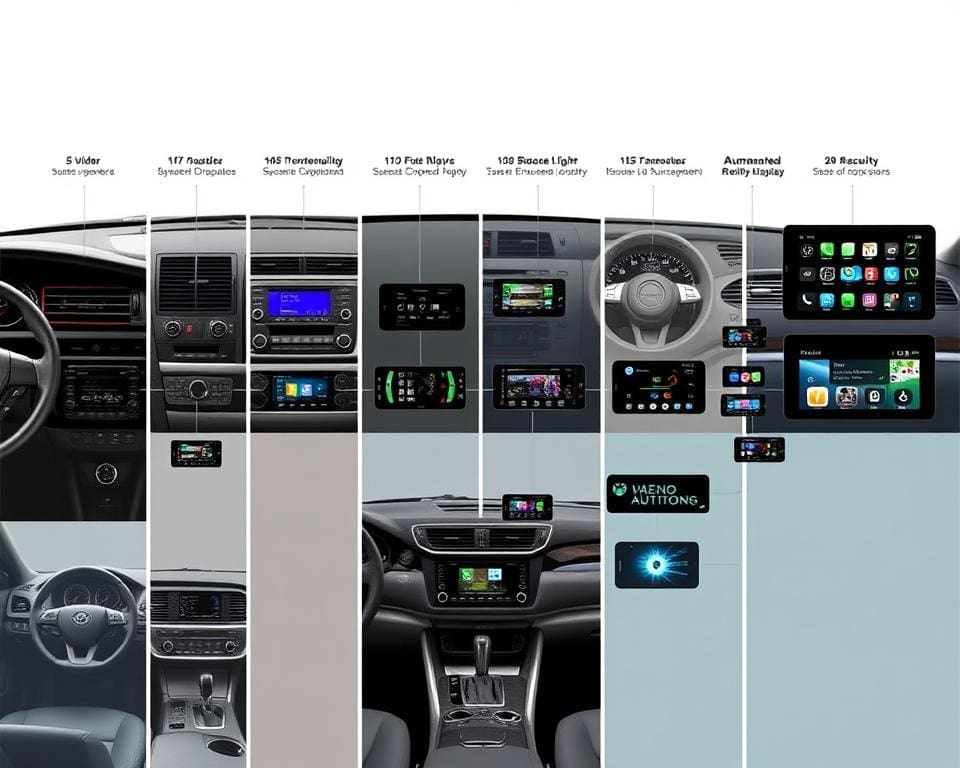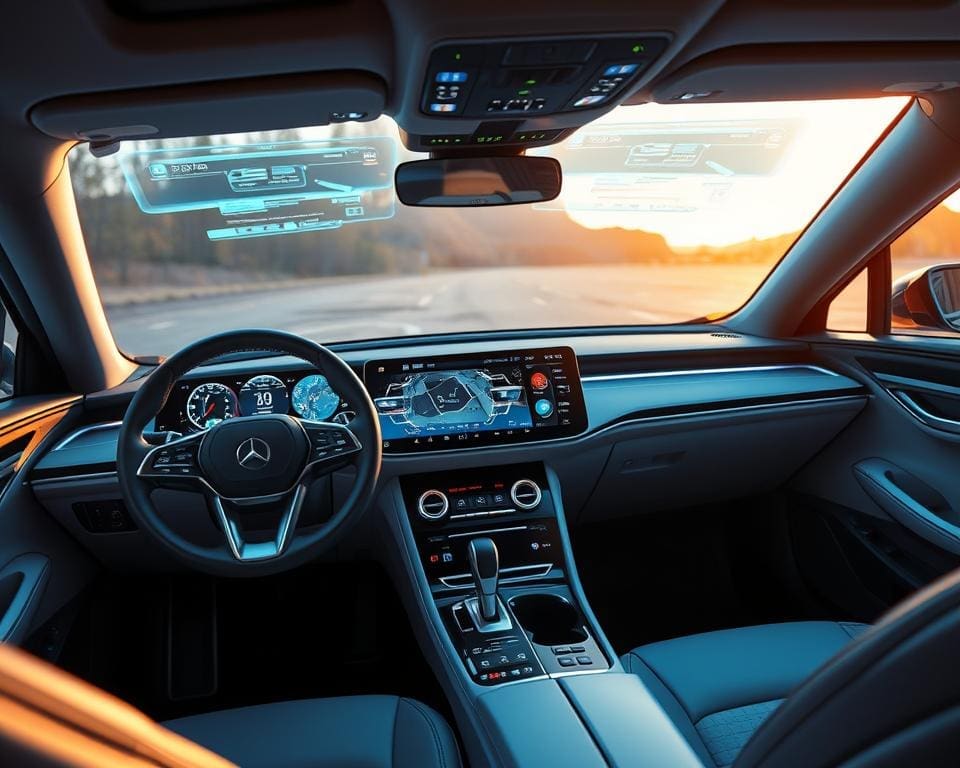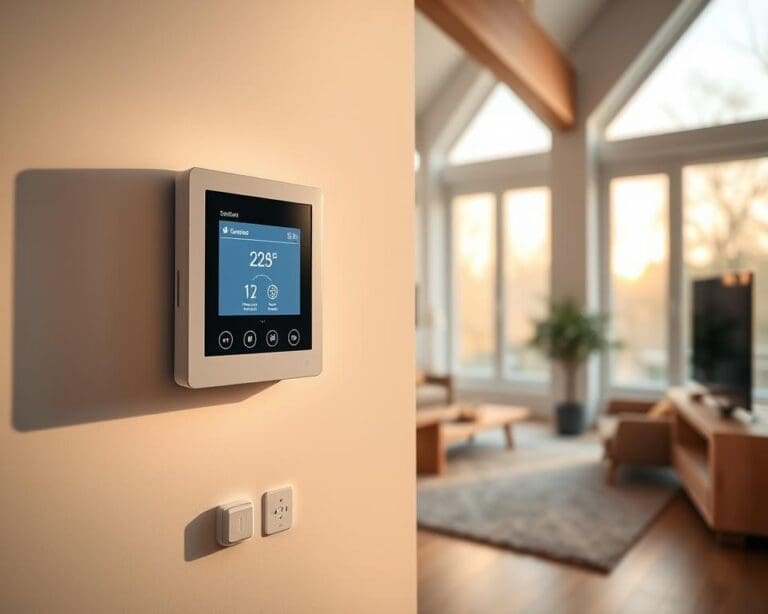The landscape of car infotainment systems is on the cusp of a significant transformation. As we look towards the Future of Car Infotainment, it becomes evident that advancements in technology are not merely enhancing user experience but are also redefining it entirely. With the rise of smart vehicle technology, we observe a shift towards more integrated and intuitive systems, promising faster connections and improved functionality.
In this evolving scenario, the concept of enhanced connectivity plays a crucial role, ensuring that drivers and passengers alike can enjoy seamless interactions with their vehicles. As consumer expectations continue to escalate, automotive manufacturers are faced with the challenge of innovating constantly to create solutions that are both highly functional and exceptionally user-friendly.
The Evolution of Car Entertainment Systems
The journey of car entertainment systems has dramatically transformed over the decades, reflecting advancements in technology and changing consumer expectations. This evolution encapsulates a shift from basic functionalities to intricate automotive multimedia platforms capable of offering a superior in-car experience.
From Basic Audio to Advanced Multimedia
Initially, the primary focus of car entertainment centred around FM/AM radios and cassette players, providing essential audio options for drivers and passengers. This simple setup gradually evolved with the introduction of CD players and, subsequently, USB compatibility. Today’s car entertainment systems incorporate streaming capabilities and integration with various devices, bringing a comprehensive array of automotive multimedia options within easy reach. This progress underscores a relentless push toward enhancing the driving experience, ensuring that entertainment in vehicles meets modern demands.
The Role of User Interface in Enhancing Experience
User interface design plays a pivotal role in the usability of car entertainment systems. A well-crafted interface not only simplifies interaction but also enriches user experience, making it easier for drivers to access and manage features. Brands like Tesla highlight the significance of intuitive controls, transforming user satisfaction into a central focus of their development strategy. By prioritising thoughtful user interface design, manufacturers aim to elevate the overall enjoyment of in-car activities, reinforcing the importance of this element in the evolution of entertainment systems.

Future of Car Infotainment: Smarter, Faster, Better
The automotive landscape is poised for transformative changes with the incorporation of smart vehicle technology. These advancements will redefine managing in-car experiences, enriching interactions between driver and vehicle. A concerted effort is underway to develop systems that not only enhance functionality but also deliver a highly personalised experience.
Integration of Smart Vehicle Technology
Smart vehicle technology is set to revolutionise how drivers engage with their cars. These systems will facilitate seamless connectivity and real-time data exchange, paving the way for more intuitive controls. Voice recognition capabilities are advancing, allowing for hands-free operation, while augmented reality displays will provide navigation aids that elevate situational awareness. The future promises enhanced user experience that makes driving both safer and more enjoyable.
Next-gen Infotainment Features on the Horizon
Leading companies, including Apple and Google, are investing heavily in next-gen infotainment features such as integrated assistant capabilities and enhanced multimedia interfaces. These systems aim to consolidate various entertainment and communication functions into a singular, fluid platform. The promise of machine learning will enable these systems to adapt to individual preferences, ensuring that every drive is tailored to the user’s needs, ultimately creating a more engaging and interactive environment within the vehicle.
Enhanced Automotive Connectivity
The automotive world is undergoing a significant transformation with the rise of connected car technology. As vehicles become increasingly integrated with advanced technologies, drivers can expect an enriched experience that prioritises safety, efficiency, and convenience. This section delves into the promising impacts of these advancements on everyday driving.
Connected Car Technology and Its Impact
Connected car technology revolutionises the way vehicles interact with their surroundings. By sharing real-time data, these vehicles enable the development of innovative features such as traffic updates, navigation enhancements, and remote diagnostics. The interconnectedness not only streamlines day-to-day driving but also contributes to a safer driving environment through capabilities like collision avoidance alerts and vehicle-to-vehicle communication.
How 5G is Transforming In-Car Digital Experience
5G technology introduces enhanced vehicle connectivity, offering remarkably faster data transmission speeds compared to previous generations. This leap allows for more reliable communications between the car and external networks, paving the way for improved navigation systems and infotainment options. As a result, drivers and passengers can enjoy seamless streaming services and real-time updates on routes and traffic conditions, making journeys not only faster but also more enjoyable.
The Importance of Over-the-Air Updates
In the realm of automotive technology, over-the-air updates play a crucial role in maintaining vehicle performance and enhancing user satisfaction. Manufacturers can deploy software improvements remotely, eliminating the need for dealership visits. This continuous improvement process ensures that vehicles remain updated with the latest features, security measures, and performance enhancements. It exemplifies the ongoing commitment to innovation within the industry, making each drive a more tailored experience.
Redefining the In-Car Digital Experience
The transformation of the in-car digital experience is revolutionising how drivers and passengers interact with their vehicles. Personalisation in infotainment systems allows for a bespoke user experience that caters to individual preferences, enhancing comfort and engagement during journeys.
Personalisation and Customisation in Systems
Modern infotainment systems offer an array of customisable features. Users can adjust settings for audio, navigation, and climate controls, ensuring each trip feels tailored to their liking. This level of personalisation in infotainment brings a sense of ownership, making every driver feel as though the vehicle is an extension of themselves. Car manufacturers like Mercedes-Benz and Ford excel in integrating these capabilities, providing sleek interfaces that promote ease of use while driving.
Voice Recognition and AI in Car Interfaces
The integration of voice recognition technology into infotainment systems marks a significant leap forward in ensuring safety and convenience. This technology allows drivers to execute commands without taking their hands off the wheel or eyes off the road, thereby enhancing the overall in-car digital experience. AI-powered systems adapt to voice commands and improve their understanding over time, making interactions more seamless. As this technology evolves, it promises to redefine how users engage with their vehicles, turning mundane tasks into effortless experiences.
Challenges and Opportunities in Car Infotainment
The ever-evolving landscape of car infotainment is not without its hurdles. One of the most significant challenges in car infotainment revolves around data privacy concerns. As vehicles become increasingly connected, the volume of personal data they collect and transmit raises questions regarding user protection and cybersecurity. Consumers now expect manufacturers to implement robust security measures to safeguard their information, and failure to do so can result in loss of trust.
Moreover, the requirement for continuous updates poses a significant challenge. As technology advances, automotive manufacturers need to ensure that their systems evolve accordingly to meet consumer demands and technological standards. This necessity also points to exciting opportunities in automotive multimedia. Auto makers that successfully adapt and innovate can carve out competitive advantages in a crowded marketplace, pushing the boundaries of what in-car systems can achieve.
Looking to the future of vehicle connectivity, it is clear that balancing risk and opportunity will be pivotal. Companies that are capable of navigating the complexities of modern infotainment while delivering enriched and personalised experiences will likely lead the charge in shaping the driving experience of tomorrow. Embracing these challenges, alongside the exciting potential for new technologies, can redefine the automotive sector and elevate consumer satisfaction in unprecedented ways.









